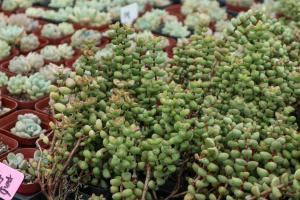Introduction
Tomatoes are versatile and tasty fruits that are loved by many. Growing tomato plants in pots is a convenient way to enjoy fresh tomatoes right at home. However, to ensure a bountiful harvest, it is important to fertilize tomato plants regularly. In this article, we will discuss how often you should fertilize tomato plants in pots.
Understanding Tomato Plant Needs
Before we dive into how often to fertilize tomato plants, it’s crucial to understand the plant’s needs. Tomatoes require three main nutrients – nitrogen, phosphorus, and potassium – to grow healthy and produce fruits. Nitrogen helps the plant grow leaves and stems, while phosphorus promotes root and flower development. Potassium helps the plant grow and become resistant to diseases and pests.
Factors to Consider
How often to fertilize tomato plants in pots depends on several factors, including the type of fertilizer, the stage of growth, the size of the pot, and the weather conditions. Organic fertilizers, such as compost and fish emulsion, release nutrients slowly and can be applied every four to six weeks. Chemical fertilizers, on the other hand, provide an instant boost and can be applied every two to three weeks. During the vegetative stage, tomato plants need more nitrogen to develop strong leaves and stems, while during flowering and fruiting, they require more phosphorus and potassium.
Fertilizing Tomato Plants in Pots
To fertilize tomato plants in pots, start by choosing the right fertilizer. Use a balanced fertilizer with equal amounts of nitrogen, phosphorus, and potassium, such as 10-10-10 or 20-20-20. Avoid using too much fertilizer, as it can burn the plant roots and damage the plant. Follow the instructions on the fertilizer package and dilute it with water as needed, depending on the size of the pot. Apply the fertilizer evenly over the soil surface and water the plant thoroughly to help the nutrients reach the roots. It’s best to fertilize tomato plants in the morning or evening, avoiding hot temperatures and direct sunlight.
Monitoring Tomato Plant Growth
As the tomato plant grows, monitor its health and adjust the fertilization schedule accordingly. If the leaves turn yellow or the plant looks stunted, it may be lacking nutrients and need more fertilization. On the other hand, if the plant grows too fast and produces few fruits, it may be getting too much nitrogen and need less fertilization. In general, tomato plants in pots require more fertilization than those in the ground due to limited soil volume and nutrients.
Conclusion
Fertilizing tomato plants in pots is essential to promote healthy growth and abundant harvests. How often to fertilize depends on several factors, including the type of fertilizer, the stage of growth, and the weather conditions. Monitoring the plant’s health and adjusting the fertilization schedule accordingly is key to growing successful tomato plants in pots.

 how many times do yo...
how many times do yo... how many planted tre...
how many planted tre... how many pine trees ...
how many pine trees ... how many pecan trees...
how many pecan trees... how many plants comp...
how many plants comp... how many plants can ...
how many plants can ... how many plants and ...
how many plants and ... how many pepper plan...
how many pepper plan...































